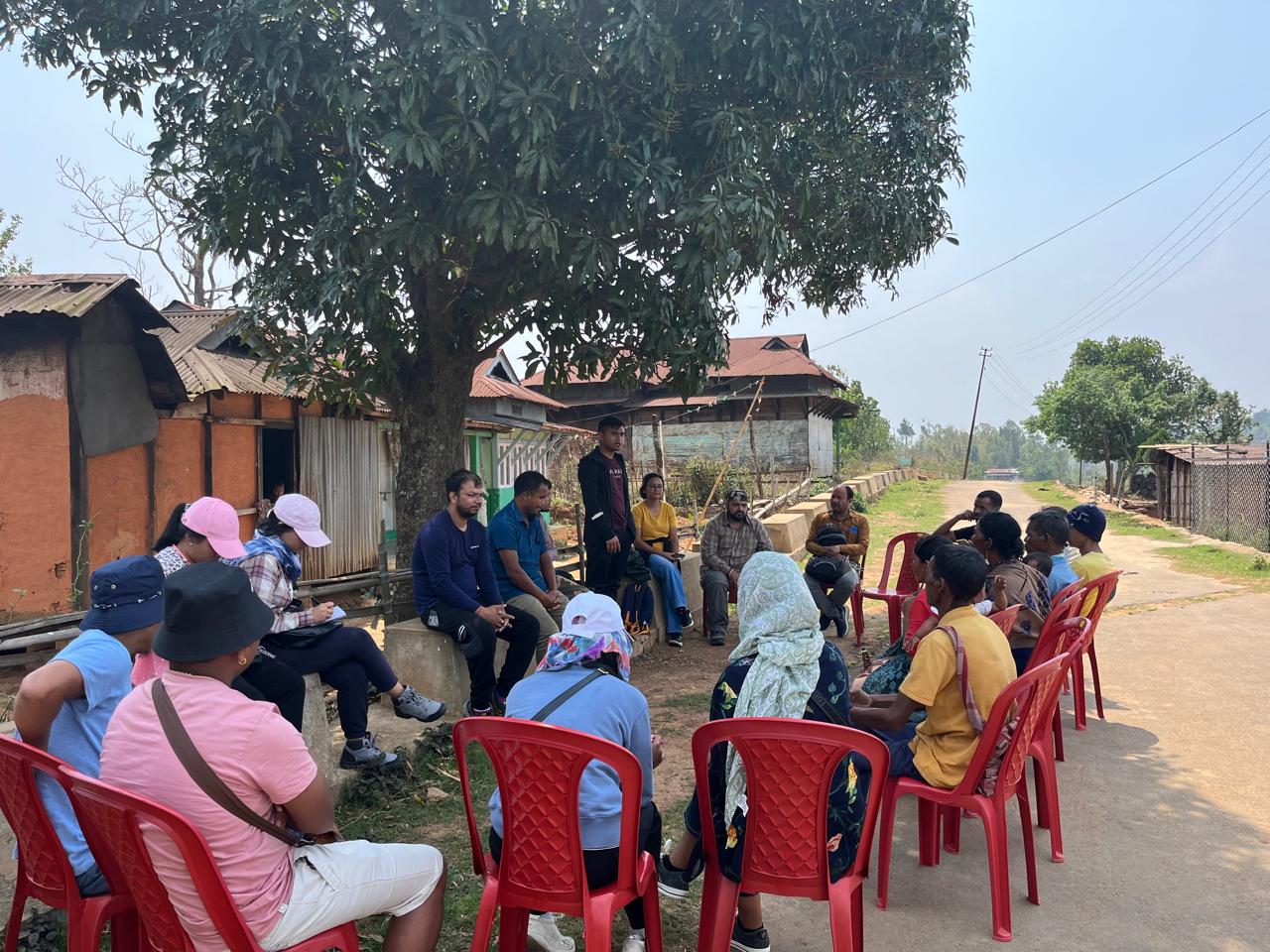Springing to Life: How Local Leadership is Securing Water for Meghalaya’s Future
Organization: Meghalaya Basin Development Authority
2024 LOCAL ADAPTATION CHAMPIONS AWARD NOMINEE
In the rain-drenched hills of Meghalaya, India, a surprising climate threat looms: water scarcity. Despite being one of the wettest places on Earth, this northeastern state faces severe water stress during the dry season. The culprit? Degrading natural springs that provide water to 80% of the population. Deforestation, unsustainable land use, and climate change are accelerating the drying up of these critical water sources. Without action, the region’s springs—and the communities that rely on them—face an uncertain future.
A Local Response to a Global Problem
In response to this escalating crisis, Meghalaya’s local government, in collaboration with local communities, launched a groundbreaking initiative. By empowering villagers to take control of water resource management, the project has mapped and rejuvenated over 55,915 springs across the state.

At the heart of the initiative are trained local champions who lead efforts to map, monitor, and manage water sources. Their intimate knowledge of the land, combined with cutting-edge tools and training from external experts, is key to the project's success. "This initiative shows the power of local leadership," says the CEO of the project. "Communities are not just recipients of aid—they are the solution. Their ownership is what’s making this project work."
Empowering Communities through Leadership and Training
Local leadership isn’t just a feature—it’s the driving force behind the project’s success. More than 5,949 training sessions have been conducted, equipping community members with the skills needed for spring mapping and sustainable water management. The active involvement of communities has been pivotal, as one village leader reflects, "Without the active involvement of the community, the scale of the problem would have been insurmountable. The training has helped us understand the value of our resources, and we can now work together to safeguard them for future generations."

Impact at Scale: Water Security for Generations to Come
The scale of this project is impressive. To date, over 54,219 households have benefited from improved water resource management. The successful mapping of thousands of springs has led to the implementation of water recharge interventions such as contour trenches, recharge pits, and check dams, significantly enhancing water availability in the region. With plans to expand the project to an additional 725 villages, it is on track to transform the water security of over 73,750 more households in the coming years.
A critical element of the project is the formation of committees at the village level, institutionalizing sustainable water management practices.

Looking ahead, the project aims to provide reliable spring water access to around 80% of Meghalaya’s population. By integrating local leadership, digital tools, and collaborative governance, the initiative is not just addressing immediate water scarcity—it is building a resilient future in the face of climate change. As Shri. Gunanka D.B, Project Director, concludes, “This project is a model for regions around the world. By empowering communities and giving them the tools they need, we are showing how local leadership can create sustainable, scalable solutions to global challenges.”
